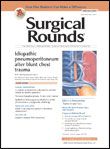Publication
Article
Restoring Non-Verbal Clues Through Facial Reanimation Surgery
Author(s):
A comprehensive review of reanimation surgery describes interventions to restore facial movement in each part of the face.

Human communication relies on more than just words. By observing facial changes, parties engaged in face-to-face communication learn much about the speaker’s emotional state and comfort with the topic being discussed.
Developmental abnormalities, early childhood infection, vascular compression of the facial nerve, inflammatory processes, neoplasms, or iatrogenic or trauma facial nerve injury can paralyze faces partially or completely. Patients who lose facial flexibility often develop depression, social isolation, and poor quality of life.
Surgeons have looked for ways to restore movement through a process called facial reanimation for decades. Ideal facial reanimation corrects impaired eyelid closure, nasal breathing, lip competence, or speech. It also improves tone and restores facial symmetry at rest and in expression. Reanimation is primarily accomplished by using nerve repair for reversible damage or muscle substitution for irreversible damage.
Kofi Boahene, a board-certified facial plastic surgeon with the Department of Otolaryngology Head and Neck Surgery at Johns Hopkins Institute of Medicine, has published a comprehensive review of facial reanimation. He began by explaining the assessment procedure, which determines if reanimation is even possible. Some paralyses — especially those in which facial muscles have atrophied or become fibrous — require the transfer of functional muscle units. Many reanimations require several steps, and good assessment ensures the steps are completed in the best possible manner. As with most procedures, interventions performed soon after injury are more likely to succeed than those performed long afterwards.
In his review, Boahene covered each part of the face in great detail. He indicated which interventions are most likely to help with common paralyses, and he stressed adherence to biomechanical principles relating to muscle tension when functional muscle transfer is needed. Additionally, he addressed physical therapy and selective chemodenervation when necessary.
In addition to its clear narrative, Boahene’s review included pictures of specific paralyses, surgical techniques, and the ever-encouraging “after” photos that demonstrate possibilities.





